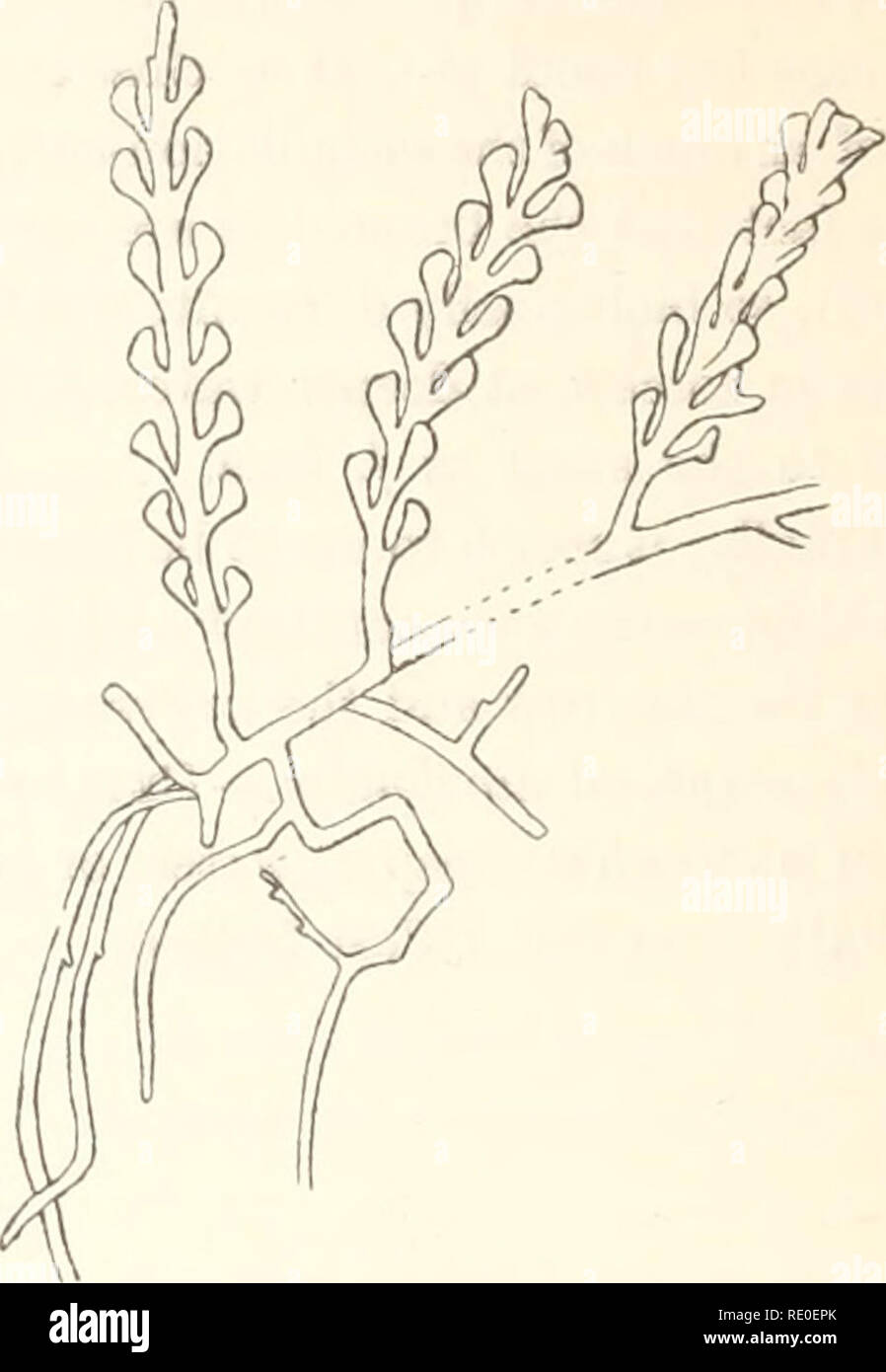. Ecological and systematic studies of the Ceylon species of Caulerpa. Marine algae. Fig. 24.—C. dichotoma n. sp. (2 x 1). Fig. 25.—C Lamourouxii (tttrn.) from Yemen coll. by MoNTAGNE- Specimen in the Herb, in the R. Kiksmuseum in Stockholm. (1 X 1). This Caulerpa is without any doubt nearly related to both C. Icetevirens and such types as corynephora or Zeyheri. The correspondence with C. Icetevirens, especially the /. laxa, shows itself in the simple pinnules, especially at the base, which also in /. laxa are somewhat flattened together from the sides. .Moreover, the vertical axes are often

Image details
Contributor:
The Book Worm / Alamy Stock PhotoImage ID:
RE0EPKFile size:
7.1 MB (146.2 KB Compressed download)Releases:
Model - no | Property - noDo I need a release?Dimensions:
1314 x 1901 px | 22.3 x 32.2 cm | 8.8 x 12.7 inches | 150dpiMore information:
This image is a public domain image, which means either that copyright has expired in the image or the copyright holder has waived their copyright. Alamy charges you a fee for access to the high resolution copy of the image.
This image could have imperfections as it’s either historical or reportage.
. Ecological and systematic studies of the Ceylon species of Caulerpa. Marine algae. Fig. 24.—C. dichotoma n. sp. (2 x 1). Fig. 25.—C Lamourouxii (tttrn.) from Yemen coll. by MoNTAGNE- Specimen in the Herb, in the R. Kiksmuseum in Stockholm. (1 X 1). This Caulerpa is without any doubt nearly related to both C. Icetevirens and such types as corynephora or Zeyheri. The correspondence with C. Icetevirens, especially the /. laxa, shows itself in the simple pinnules, especially at the base, which also in /. laxa are somewhat flattened together from the sides. .Moreover, the vertical axes are often cylindrical in C. dichotoma, in which case also the pinnules radiate from all sides, and this is especially the case at the base. The plant, too, at a first glance gives the impression of a C. Icetevirens, though the mode of growth is rather different. On the other hand, the flattened axes with their opposite pinnules indicates a close resemblance to coryn&phora. But a new fact is added to this, viz., the tendency of the pinnules to branch dichotomously, and it is this character that justifies the creation of this plant as a special elementary species. A certain resemblance seems to be present to the little weak /. Zeyheri, too, which has also the pinnules opposite and laterally flattened ; but it is always very slender, and at the same time it has always simple pinnules of somewhat diJGEerent shape, so that a confusion with G. dichotoma is not likely to occur. However, C. dichotoma is very similar, or at least analogous in its development to both Icetevirens and Lamourouxii (in Weber v. Bosse's definition). In the Herbarium in the R. Riksrauseum in Stockholm there is a Caulerpa labelled C. clavifera Ag. (Yemen) from Montagne's Herbarium. On the same shelf are mounted two distinct forms, not only tjrpical clavifera, but also some specimens of another with fiat axes and opposite sparse pinnules with the appearance of G. Lamourouxii (PI. XXXII. I Weber v. Bosse, lac. cit.